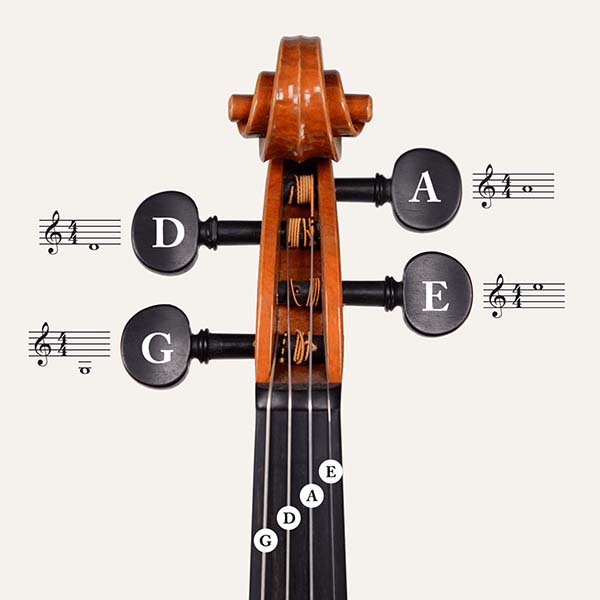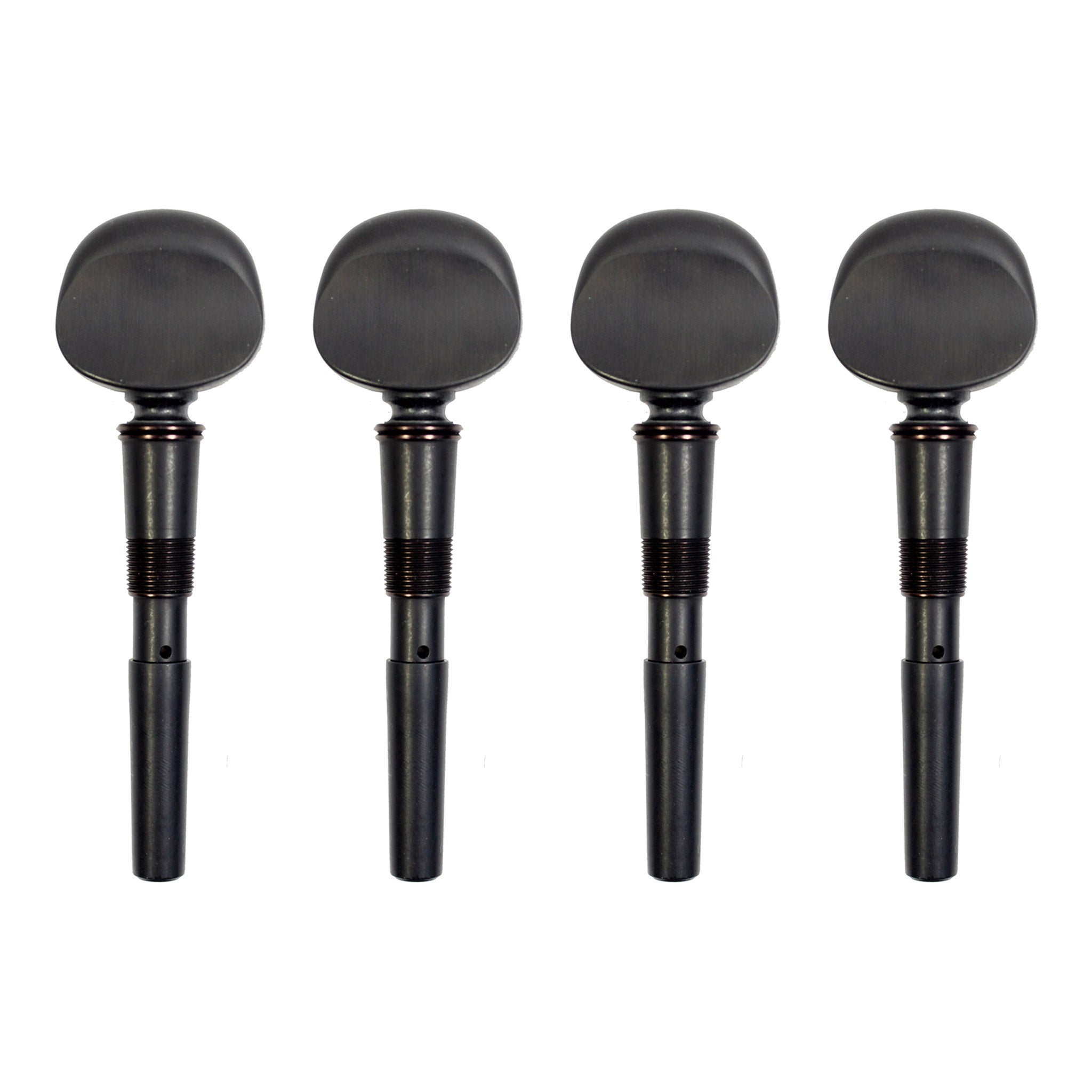
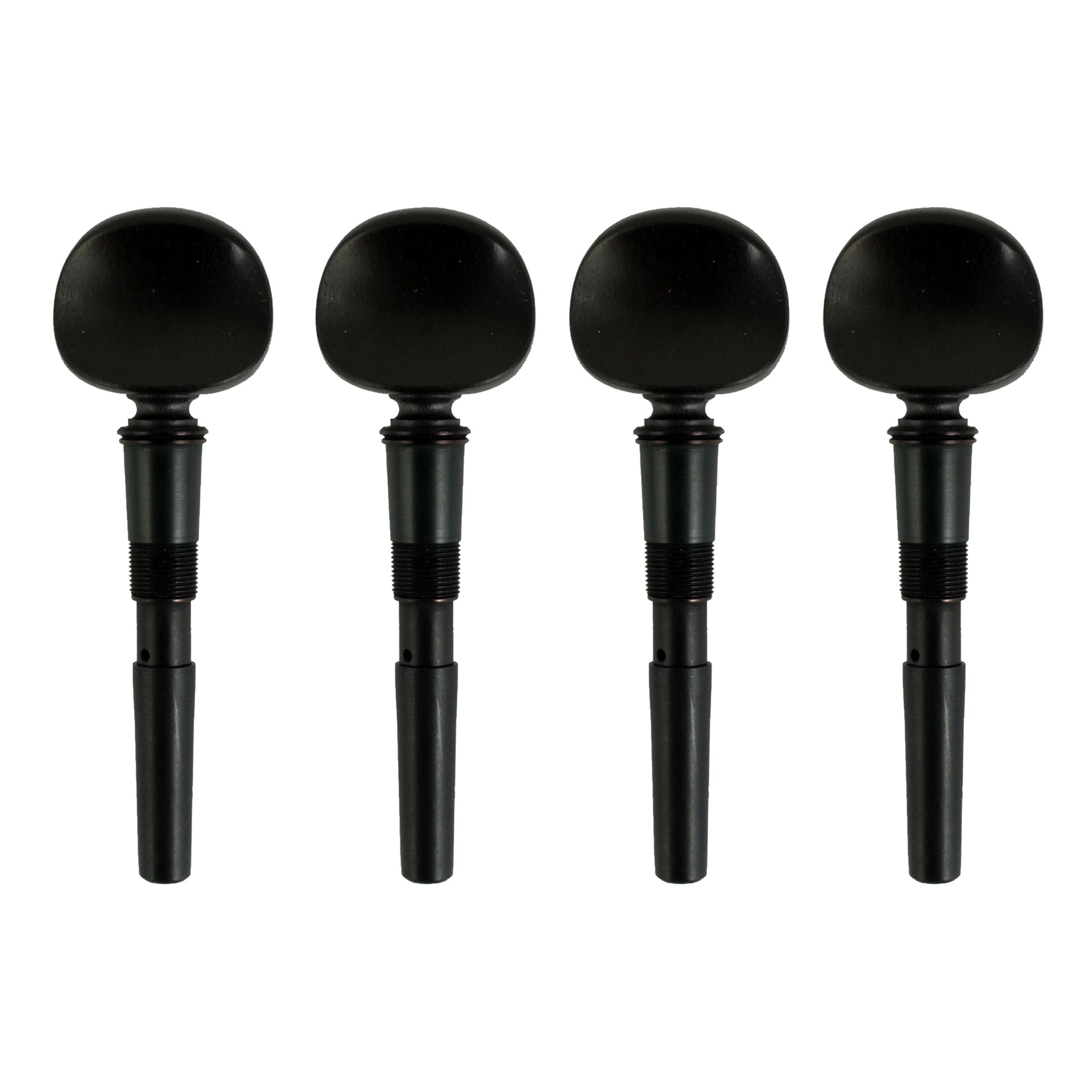
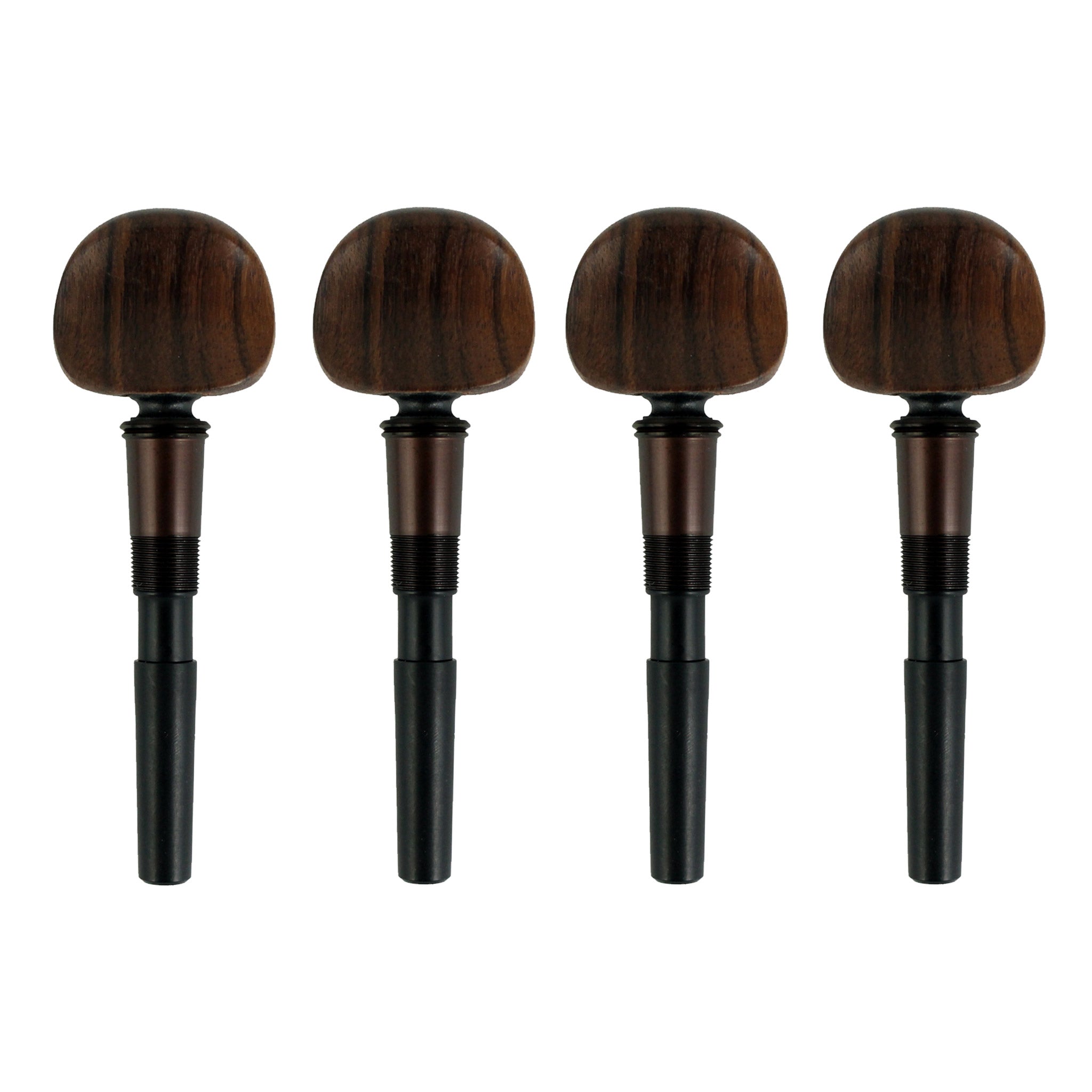
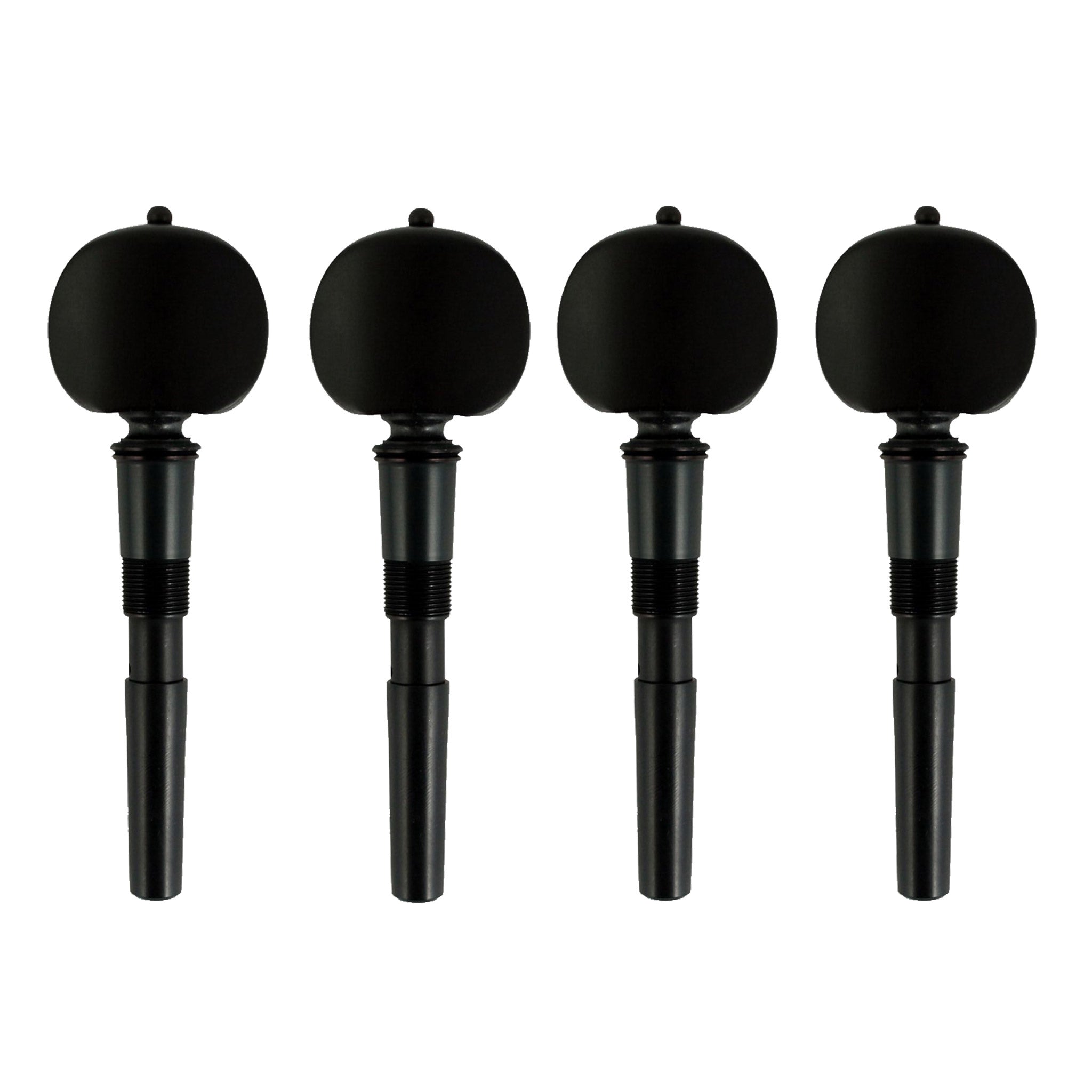
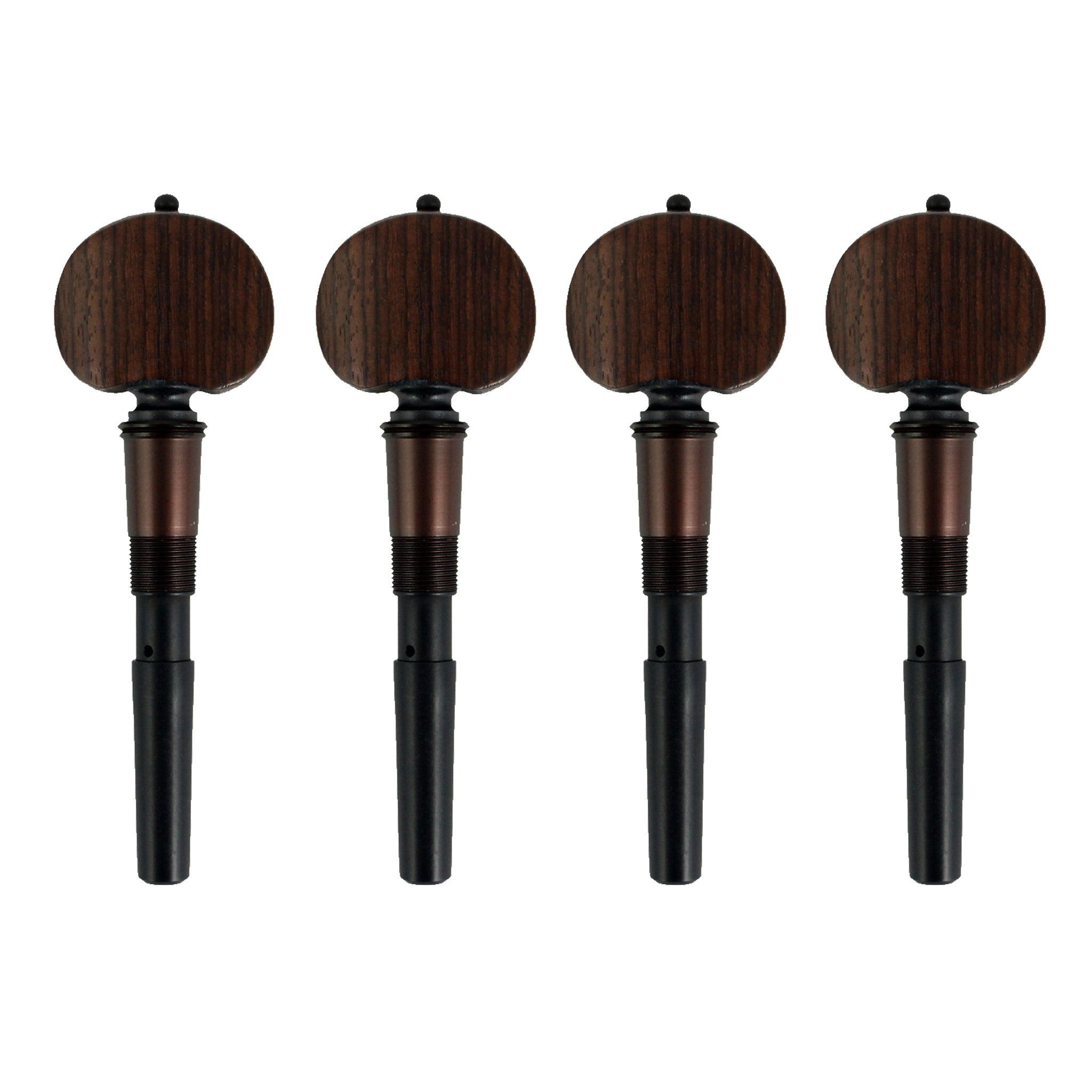
Knilling
Perfection Planetary Geared Cello Peg Set
Size
Style
Review Videos
Knilling's Perfection Planetary Geared Peg is an innovative tuning peg providing a fine tune and “non-slip” solution for your violin, viola or cello. The 4:1 gear reduction gives the Perfection peg the precision to act as its own finetuner.
Perfection peg operation
Turning the head of a Perfection peg rotates its main central sun gear. Three planet gears are held between the sun gear and an outer ring gear. As the sun gear turns the planet gears orbit around it. The motion of the planetary gears rotates the shaft, which then takes up the string. The shaft turns once for every four turns of the head. The 4:1 gear reduction gives the Perfection peg the precision to act as its own finetuner.
When tuning: pressing the head of a Perfection peg inwards as you turn it stiffens the action in a gradual and controllable way, and this allows the peg to hold the string at tension. Like applying the brakes of a car or a bicycle: as you press the brakes you gradually slow down, come to a stop and then are locked in position by the brakes. The reverse happens when the peg head is gently pulled outward as it is turned: the action of the peg is released, becomes softer and the string is able to unwind.
To get a feel for how the pegs work: for each peg, back the peg off a couple of turns to release the string tension and several times work the head backwards and forwards a half turn each way as you applay a gentle inward pressure to the head. Do the same thing while gently pulling outwards on the head. As you try this you quickly discover how to adjust the peg for ease of turning and optimal hold. In practice, you find a setting that works for you and tend to leave it at that point.
If at some stage you find that the string is not holding, gently apply more inward pressure as you turn and this will firm the action. Conversely, if the peg becomes difficult to turn, gently pull the peg head away from the peg box as you turn and you will feel the action become easier.
Technical Specification
Shape, weight & taper
Perfection pegs have a standard taper and fit in the same holes as standard wooden friction pegs. They have the same shape, weight and taper as a set of good ebony pegs.
Heads
The head of a Perfection peg is made either of ebony, rosewood, or ABS synthetic (the plastic often used in car bumpers). The head is attached to the central sun gear.
Shank
The section just below the head is the shank, which is made of aircraft-grade aluminium, turned, polished and anodized. When the peg is installed the shank is fixed in the peg box and remains stationary.
Planetary gears
Concealed in the shank is a set of planetary gears that are built into and around the central shaft, and the brake which holds the gears in position against the tension of the strings. The gears are fashioned from the same toughened steel used for helicopter rotor-shafts. They are immensely strong and give the pegs their accuracy and control. They are permanently sealed, and lubricated with the grease commonly used for binocular focus assemblies.
Shaft
The shaft sits below the shank and is made of anodised aluminium and Delrin industrial nylon. It's the part with the string hole through the middle. The shaft is driven by the gears and turns as the head is turned.
See the Perfection pegs planetary gear diagram.
Measuring & selecting pegs
Perfection pegs are available in a range of shank diameters to suit different instruments and peg hole sizes.
Taking measurements
To ensure a good fit all instruments should be measured before you place an order.
Measurements should be made at the point where the peg enters the peg box on the peg head side (your luthier would make these measurements before ordering and fitting the pegs).
-
Measure the diameter of all the peg holes
- To make an exact measurement of the pegholes, remove the pegs and measure the diameter of the holes.
- For a good approximate measurement leave the pegs in place, use a set of calipers to measure the diameter of the existing pegs.
- Select the Perfection peg that is just larger than the largest peg hole
- Newer instruments usually suit the smaller Perfection pegs.
- Older instruments will often have larger peg holes and will need the larger pegs.
We recommend installation by a professional. Before placing your order, we recommend looking at the sizing chart for proper sizing.
Customer Reviews

Fiddlershop
About Us
Fiddlershop is a small family-owned business located in South Florida. Since 2012 we have been serving the string community with quality instruments and accessories. We believe that music and instruments should be accessible to everyone at a price they can afford.


